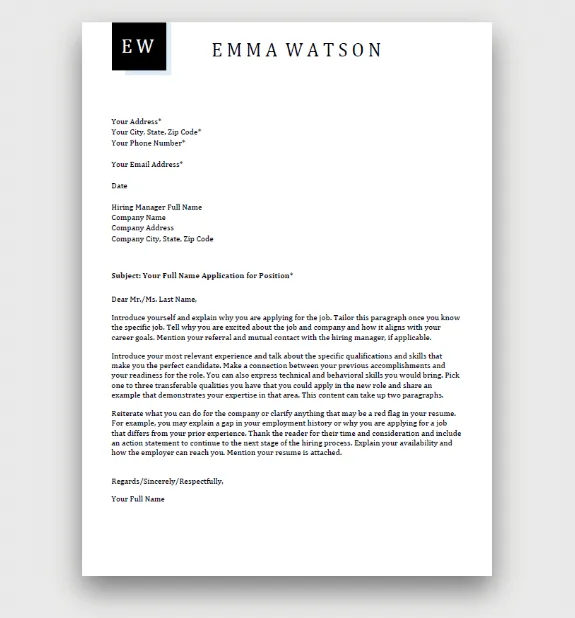Why a Cover Letter Matters
In today’s competitive job market, a well-crafted cover letter is your secret weapon. It’s the first impression you make on a potential employer, and it can significantly impact whether or not you land an interview. A compelling cover letter goes beyond simply reiterating your resume; it tells a story, showcases your personality, and demonstrates your genuine interest in the position and the company. It’s your opportunity to make a strong case for why you’re the ideal candidate. Without a cover letter, you might miss the chance to highlight relevant skills, experiences, and achievements that make you stand out from the crowd, potentially costing you your dream job.
Cover Letter’s Purpose and Importance
The primary purpose of a cover letter is to introduce you and your qualifications to a hiring manager. It provides context for your resume, explaining why you’re interested in the specific role and how your skills align with the company’s needs. A cover letter allows you to demonstrate your communication skills, enthusiasm, and understanding of the company’s values and goals. It’s an opportunity to personalize your application, showing that you’ve taken the time to research the company and tailor your application to the specific job. It helps employers understand your career aspirations and how this job fits into your long-term career goals. This personalization is crucial in a world where generic applications are easily discarded.
What Employers Expect in a Cover Letter
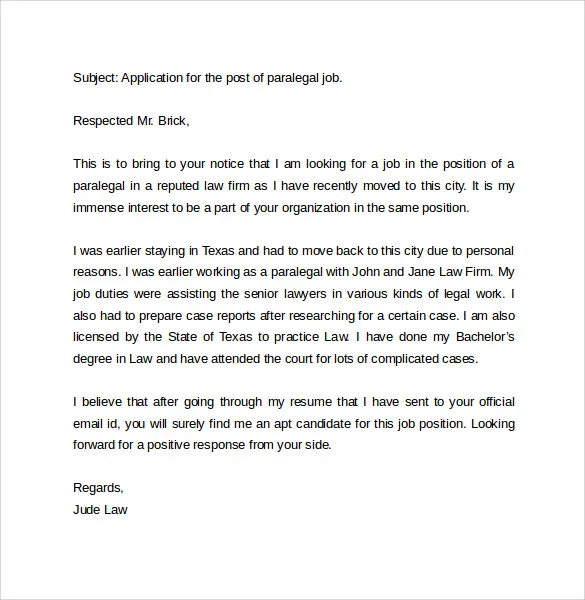
Employers look for several key elements in a cover letter. They want to see a clear expression of your interest in the position and the company. They expect you to highlight your most relevant skills and experiences, showcasing how they align with the job requirements. They want to understand what makes you unique and why you’re a great fit for the company culture. Employers also look for professionalism in your writing, including proper grammar, spelling, and formatting. A well-structured, concise, and error-free cover letter demonstrates your attention to detail and your commitment to quality. They assess your ability to communicate effectively and whether you understand the job requirements and company values.
Crafting a Cover Letter That Grabs Attention
To grab an employer’s attention, start with a strong opening that immediately communicates your enthusiasm and highlights your most relevant qualifications. Avoid generic greetings and instead address the hiring manager by name if possible. In the body of your letter, focus on the employer’s needs, not just your own. Explain how your skills and experiences can help solve their problems or contribute to their goals. Use specific examples to illustrate your achievements, and quantify your accomplishments whenever possible. Show genuine interest in the company by mentioning specific aspects that appeal to you, such as their mission, values, or recent projects. Keep it concise, focusing on the most crucial information that directly relates to the job.
Formatting Your Cover Letter
Formatting plays a crucial role in making your cover letter easy to read and visually appealing. Use a professional-looking font like Times New Roman, Arial, or Calibri, and maintain a consistent font size (typically 11 or 12 points). Use single-spaced paragraphs with a blank line between each paragraph for better readability. Keep your margins at one inch on all sides. Ensure that the letter is aligned to the left, avoiding full justification. The layout should be clean and well-organized, making it easy for the hiring manager to scan the document and quickly find the information they need. Proper formatting shows your attention to detail and professionalism.
Choosing the Right Tone
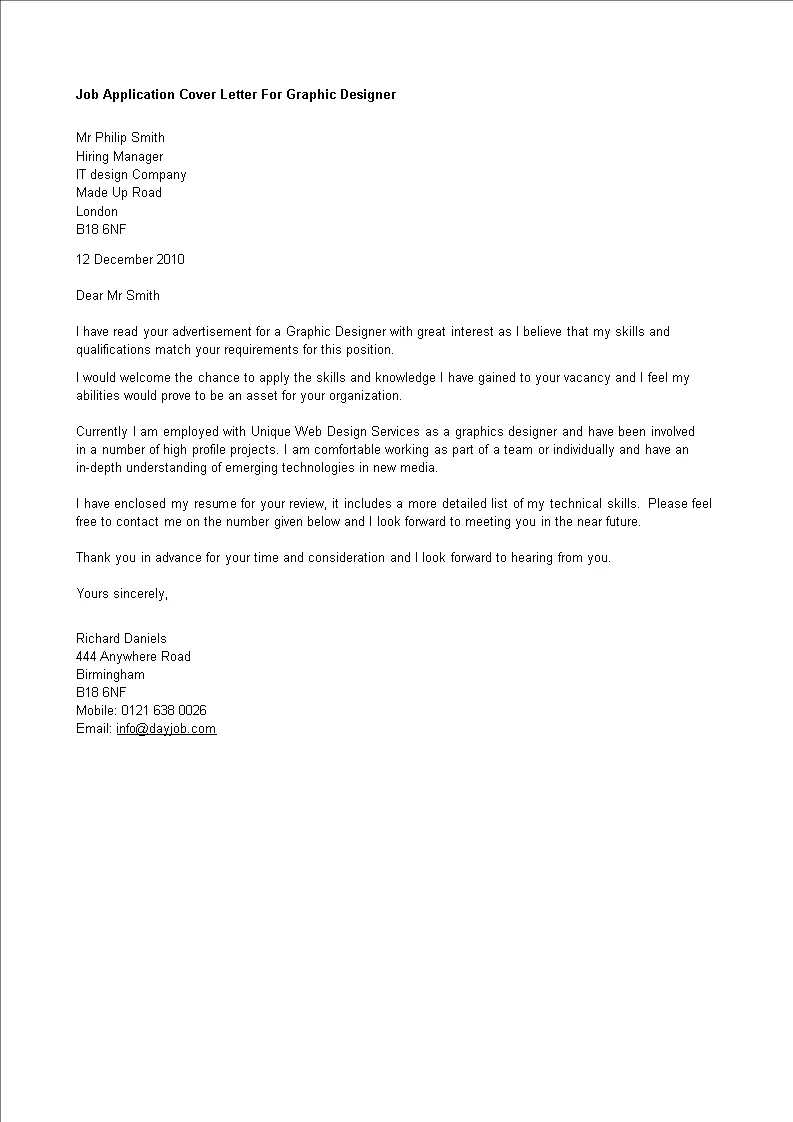
The tone of your cover letter should be professional, enthusiastic, and tailored to the company and the specific role. Avoid being overly formal or using jargon that the hiring manager might not understand. Express your personality and enthusiasm while maintaining a respectful and courteous tone. When possible, mirror the company’s culture in your writing style. If the company culture is more relaxed, your tone can be slightly less formal, but always remain professional. The tone should be appropriate for the industry and the specific role you’re applying for. Ensure that your tone conveys your genuine interest in the opportunity and highlights your positive attitude.
Header and Salutation
Your cover letter should begin with a header that includes your contact information, such as your name, address, phone number, and email address. If you have a professional online presence, such as a LinkedIn profile, you can also include a link to it. Always include the date. The salutation should address the hiring manager by name if possible. If you’re unsure of the hiring manager’s name, research the company website or LinkedIn. If you can’t find a name, use a general greeting such as “Dear Hiring Manager” or “Dear [Department Name] Hiring Team.” Avoid overly generic salutations like “To Whom It May Concern.”
The Body of Your Cover Letter
The body of your cover letter is where you make your case for why you’re the ideal candidate. Begin with a strong opening paragraph that immediately grabs the reader’s attention and states your purpose for writing. The subsequent paragraphs should highlight your most relevant skills, experiences, and achievements, connecting them directly to the job requirements. Use specific examples to illustrate your capabilities, providing evidence of your accomplishments. Tailor each section to the specific requirements of the role and the company’s needs. Each paragraph should focus on a specific point, making sure your message is clear and concise.
Highlighting Your Skills and Achievements
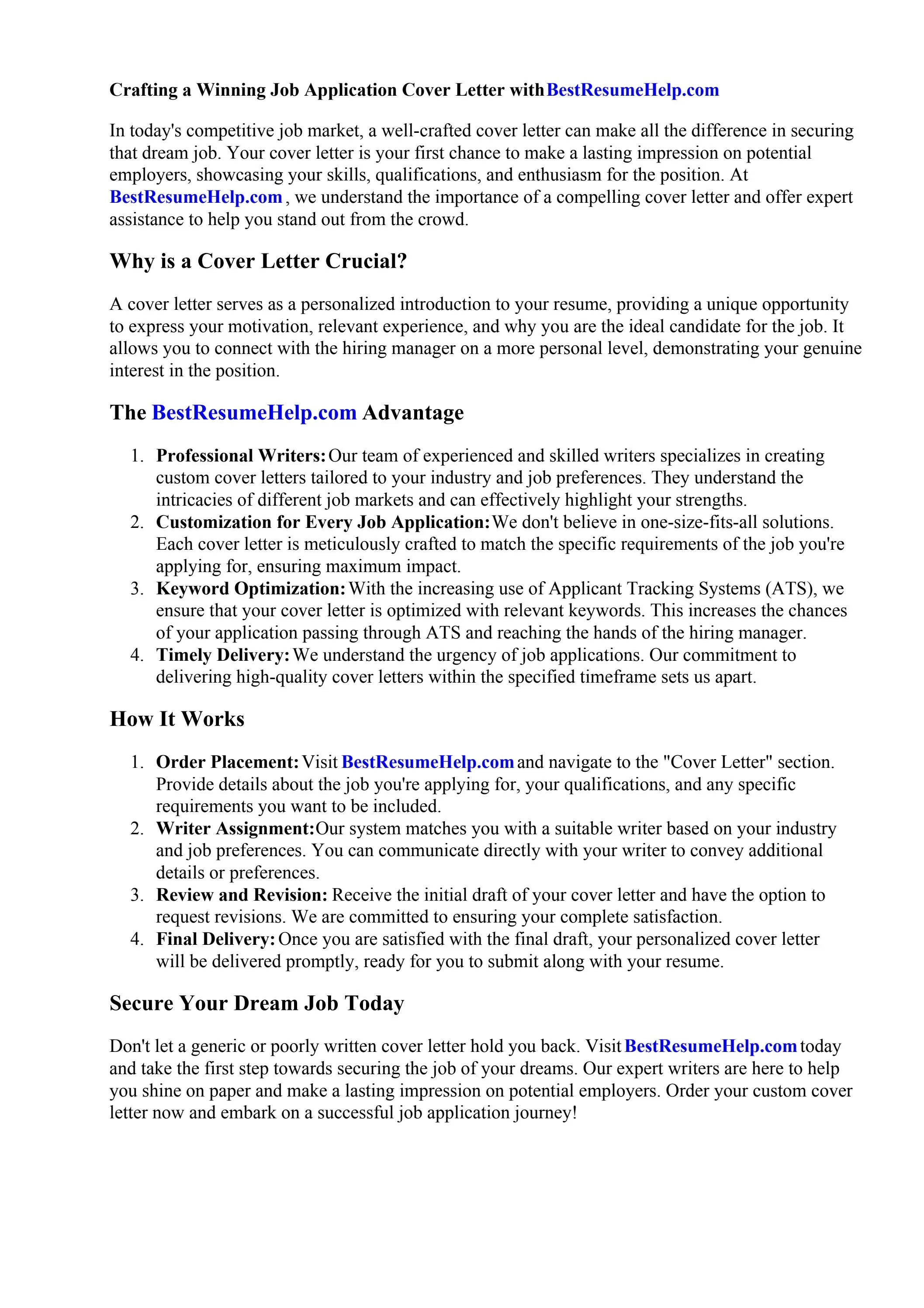
When highlighting your skills and achievements, focus on the qualifications that are most relevant to the job description. Don’t just list your skills; demonstrate how you’ve used them to achieve results. Use the STAR method (Situation, Task, Action, Result) to structure your examples. Describe the situation, the task you were assigned, the actions you took, and the results you achieved. This helps the hiring manager understand the impact of your contributions. Align your skills with the job’s requirements, showing the hiring manager how your abilities directly meet their needs. Provide specific examples to support your claims, backing them up with quantifiable results whenever possible.
Quantifying Your Accomplishments
Quantifying your accomplishments is crucial for demonstrating the impact of your work. Instead of saying “Improved sales,” state “Increased sales by 15% in one quarter.” Use numbers, percentages, and other metrics to provide concrete evidence of your achievements. Whenever possible, use data to back up your claims. For example, “Reduced customer complaints by 20% by implementing a new support system.” This makes your accomplishments more tangible and provides the hiring manager with a clear understanding of your capabilities. Quantifiable results are more persuasive than vague statements, showing the value you can bring to the company.
Tailoring Your Cover Letter to the Job
Tailoring your cover letter to each specific job is essential. Avoid using a generic cover letter for multiple applications. Carefully review the job description and identify the key skills, experiences, and qualifications that the employer is seeking. Highlight the aspects of your background that align with these requirements. Use the same keywords and phrases from the job description in your cover letter. Show how your skills and experience meet the company’s specific needs. By tailoring your cover letter, you demonstrate to the hiring manager that you are genuinely interested in the role and have taken the time to understand the company’s requirements. Always customize each cover letter to increase your chances of success.
Researching the Company and the Role
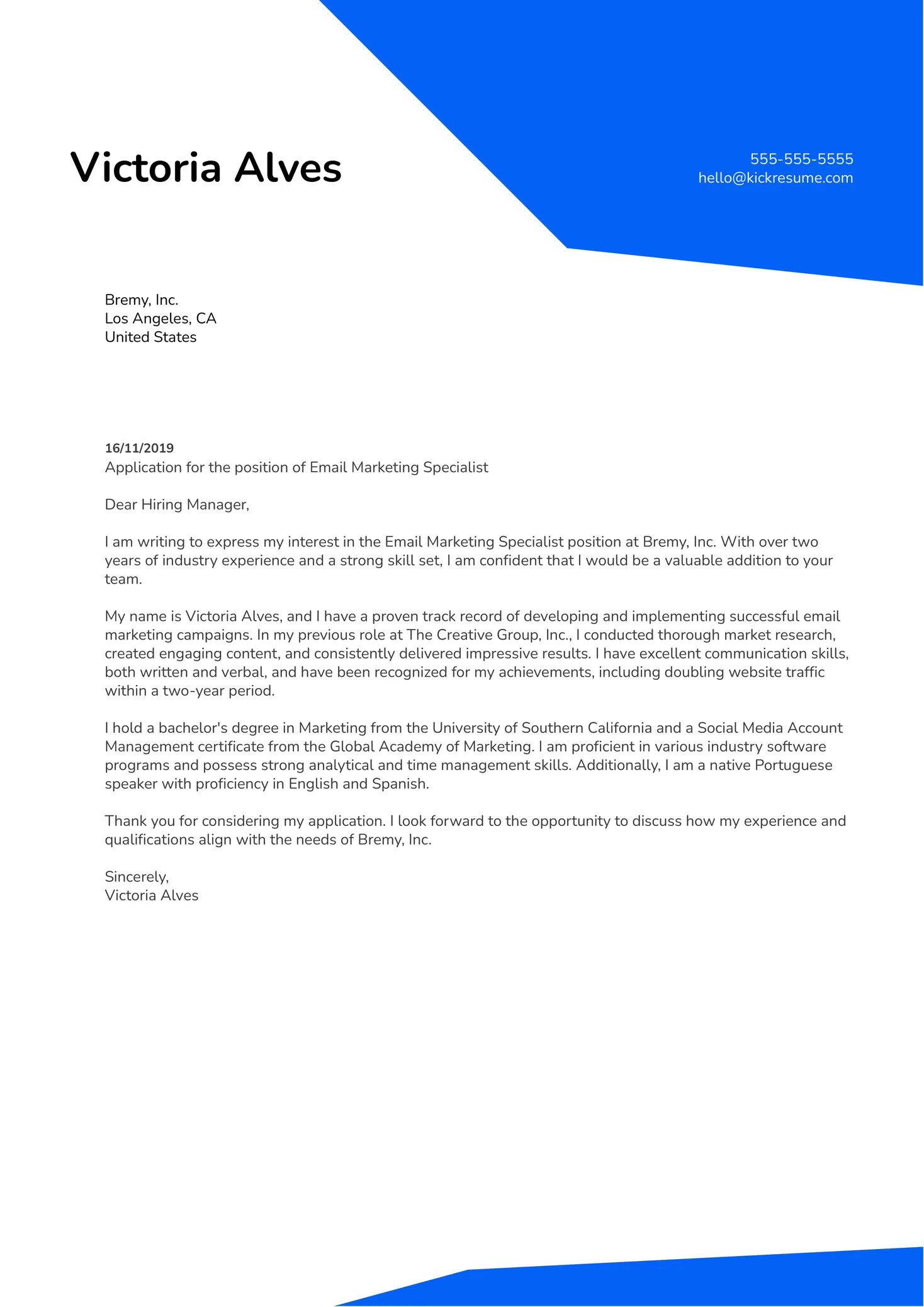
Before writing your cover letter, thoroughly research the company and the specific role you’re applying for. Visit the company’s website to learn about their mission, values, products, and services. Explore their social media profiles and read news articles about the company to stay informed about their recent activities and achievements. Understand the role’s responsibilities and requirements by carefully reviewing the job description. Tailor your cover letter to demonstrate your understanding of the company’s culture and your ability to contribute to their success. Researching the company also helps you personalize your cover letter, which shows that you have a genuine interest in working for the company.
Addressing Specific Requirements
Carefully review the job description to identify the specific requirements the employer is seeking. Address each of these requirements in your cover letter. If the job description lists required skills, highlight how you possess these skills and provide examples of how you’ve used them in the past. If the job description outlines specific qualifications or experiences, make sure you address them directly in your letter. Show how your background aligns with these requirements, and quantify your accomplishments whenever possible. This proactive approach demonstrates your attention to detail and shows the hiring manager that you meet the requirements of the role.
Avoiding Common Cover Letter Mistakes
Several common mistakes can undermine your cover letter and reduce your chances of getting an interview. Avoid typos and grammatical errors, which can make you appear unprofessional. Refrain from using generic, uninspired content that could apply to any job. Keep your cover letter concise, typically no longer than one page. Avoid overly formal language or jargon, and ensure your letter is well-organized and easy to read. Proofread your cover letter carefully before submitting it. By avoiding these common mistakes, you’ll significantly increase the effectiveness of your cover letter.
Typos and Grammatical Errors
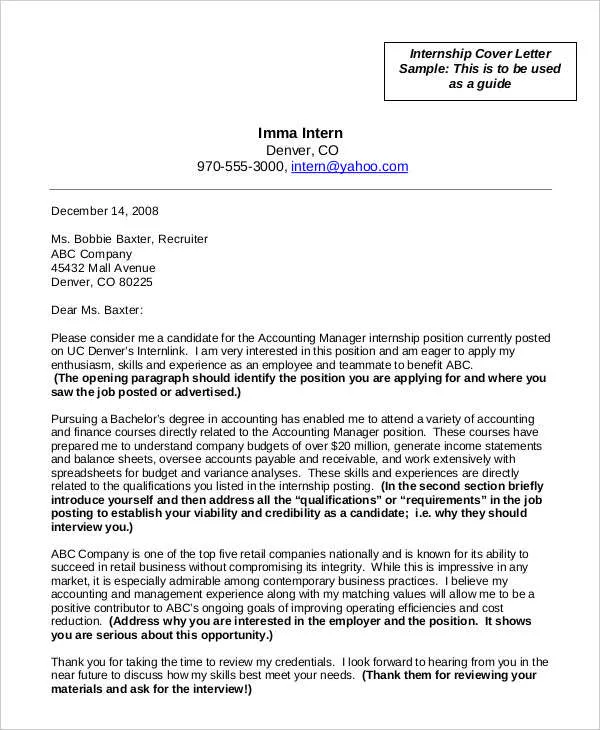
Typos and grammatical errors are major red flags that can immediately disqualify your cover letter. Proofread your letter carefully before submitting it. Use spell-check and grammar-check tools, but don’t rely on them entirely. Read your letter aloud to catch errors you might miss when reading silently. Ask a friend or family member to proofread your letter for you. Typos and grammatical errors make you appear careless and can undermine your credibility. Ensure your cover letter is polished and error-free to make a positive impression on the hiring manager.
Generic and Uninspired Content
Generic, uninspired content that could apply to any job is a major turn-off for hiring managers. Avoid using generic phrases and clichés that don’t add any value to your cover letter. Customize your letter to the specific job and company. Show that you’ve taken the time to research the company and understand the role. Highlight the aspects of the job that excite you, and demonstrate how your skills and experiences align with the company’s needs. By providing relevant, personalized content, you’ll demonstrate your genuine interest and increase your chances of standing out from the competition.
Lengthy Cover Letters
Lengthy cover letters can be off-putting to hiring managers. Aim to keep your cover letter concise, typically no longer than one page. Focus on the most relevant information and avoid unnecessary details. Use clear, concise language to convey your message effectively. Structure your letter logically, with a clear introduction, body, and conclusion. Respect the hiring manager’s time by providing only the most essential information. A well-written, concise cover letter demonstrates your ability to communicate effectively and shows that you value the hiring manager’s time.
The Closing of Your Cover Letter
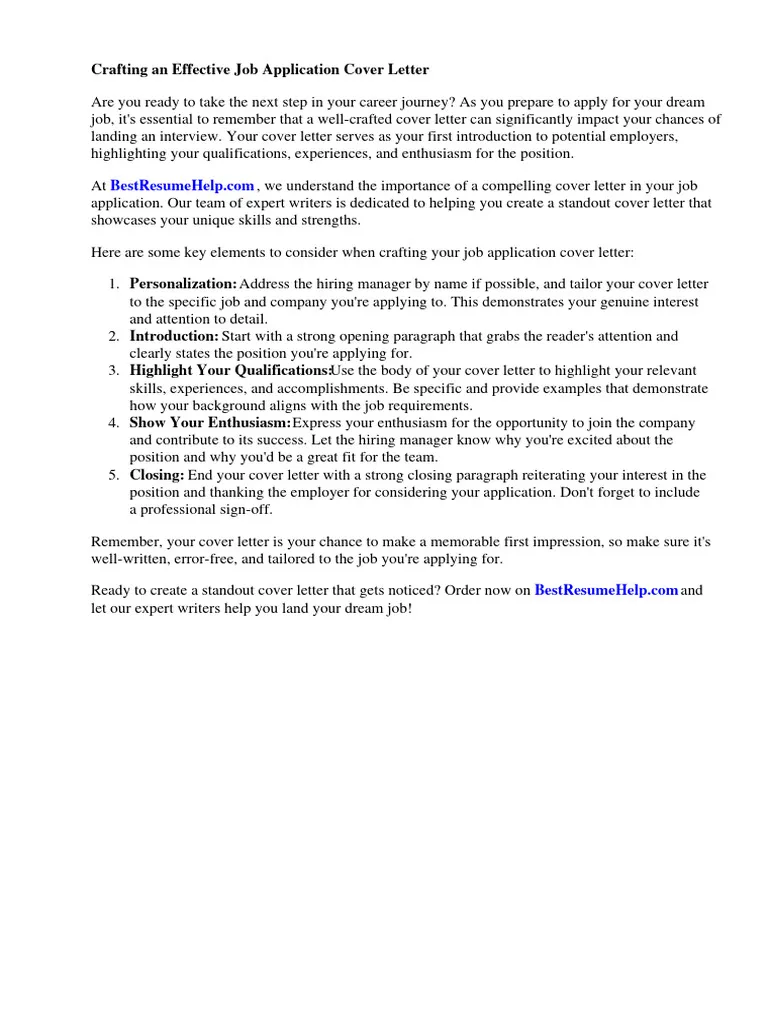
The closing of your cover letter is your final opportunity to make a strong impression. Express your enthusiasm for the opportunity and reiterate your interest in the role. Include a call to action, such as requesting an interview. Thank the hiring manager for their time and consideration. End with a professional closing, such as “Sincerely,” or “Best regards,” followed by your name. Ensure that the tone of your closing is professional and reflects your genuine interest in the opportunity. A strong closing leaves a lasting impression and encourages the hiring manager to consider your application further.
Expressing Your Enthusiasm
Expressing your enthusiasm for the opportunity is crucial in the closing paragraph. Show that you’re genuinely excited about the role and the company. Mention specific aspects of the job or company that appeal to you. Avoid generic statements; instead, personalize your message. Your enthusiasm should be genuine, reflecting your interest in the opportunity. Your passion for the role and the company culture can significantly increase your chances of getting an interview. A positive attitude can make a great impression on the hiring manager.
Call to Action
Include a clear call to action in your closing. Request an interview, expressing your desire to discuss your qualifications further. Make it easy for the hiring manager to take the next step. Provide your contact information again, making it easy for them to reach you. Make it clear that you’re eager to learn more about the role and how you can contribute to the company’s success. Include a specific call to action, such as “I am eager to discuss how my skills can benefit your team” or “I look forward to hearing from you soon.” This shows initiative and confidence.
Proofreading and Editing
Proofreading and editing are critical steps in the cover letter writing process. Before submitting your cover letter, thoroughly proofread it for any errors in grammar, spelling, and punctuation. Read your letter aloud to catch mistakes you might miss when reading silently. Use spell-check and grammar-check tools, but don’t rely on them entirely. Ask a friend, family member, or career advisor to review your cover letter for feedback. They can provide a fresh perspective and catch errors you might have missed. A polished, error-free cover letter demonstrates your attention to detail and professionalism.
Getting Feedback on Your Cover Letter
Getting feedback on your cover letter from others can significantly improve its effectiveness. Ask a friend, family member, career counselor, or mentor to review your letter. Ask them to provide constructive criticism on the content, structure, formatting, and tone. Consider asking them to assess whether it effectively conveys your qualifications and enthusiasm for the role. Be open to their suggestions and incorporate their feedback to improve your letter. Having someone else review your cover letter can help you catch errors, identify areas for improvement, and ensure that your message is clear and concise.
Submitting Your Cover Letter
When submitting your cover letter, carefully follow the instructions provided by the employer. Pay attention to the requested file format and naming conventions. Attach your cover letter as a separate document (preferably a PDF) unless the instructions specify otherwise. Ensure your cover letter and resume are well-formatted and easy to read. Always proofread your documents before submitting them. By following the submission instructions carefully, you demonstrate your attention to detail and your commitment to the application process. Following the instructions can help prevent your application from being overlooked.
File Format and Naming
When saving your cover letter, use a professional file format, such as PDF, unless the employer specifies a different format. PDF files preserve your formatting, ensuring that your cover letter looks the same on all devices. When naming your file, use a clear and professional naming convention, such as “Your Name_Cover Letter_[Job Title].” This makes it easy for the hiring manager to identify your document. Avoid using special characters or spaces in the file name, and ensure that the file name is easy to understand. Proper file formatting and naming demonstrate your professionalism and attention to detail.
Sending Your Cover Letter via Email
When sending your cover letter via email, include a concise and professional subject line that includes the job title and your name. For example, “Application for Marketing Manager - Your Name.” In the body of the email, briefly reiterate your interest in the position and mention that your cover letter and resume are attached. Keep the email message brief and to the point. Attach your cover letter and resume as separate PDF files. Proofread your email before sending it to ensure there are no typos or grammatical errors. A professional email message reflects your attention to detail and sets a positive tone for your application.
Cover Letter Examples that Work
Studying cover letter examples can provide valuable insights and inspiration. Look for examples that are tailored to specific industries or roles. Pay attention to how the authors highlight their skills and achievements, and how they tailor their letters to the company’s needs. Analyze their structure, tone, and language. Use these examples as a guide, but avoid simply copying them. Customize your cover letter to reflect your unique experiences and qualifications. By studying effective cover letter examples, you can enhance your cover letter writing skills and increase your chances of success.
